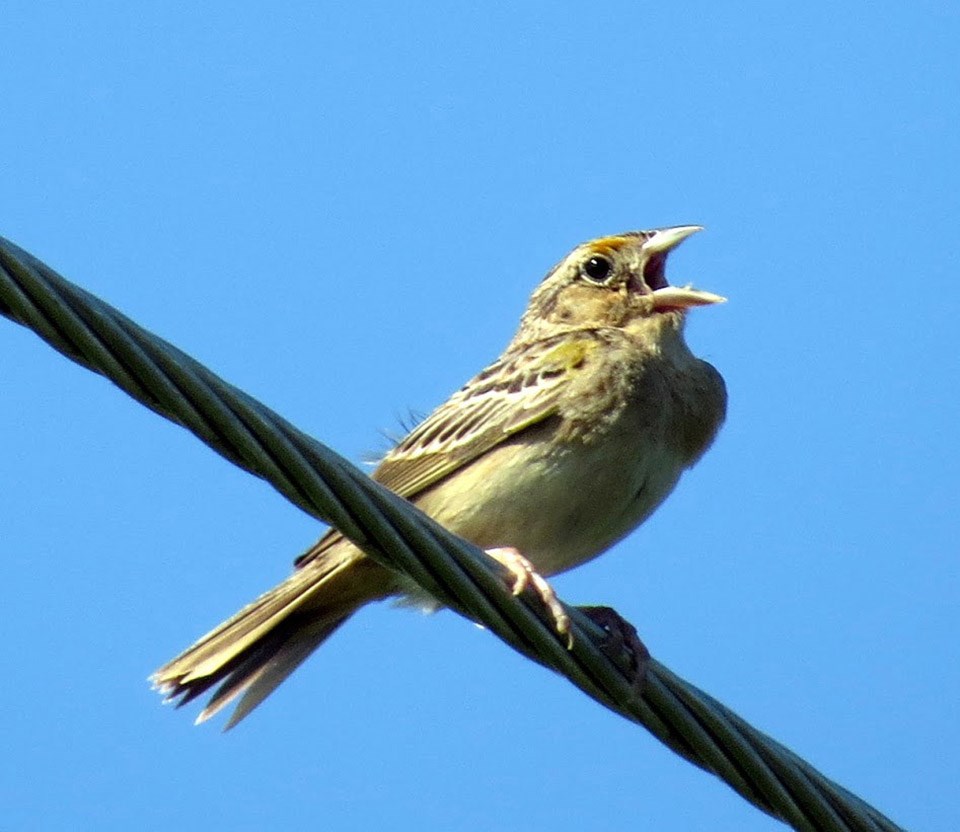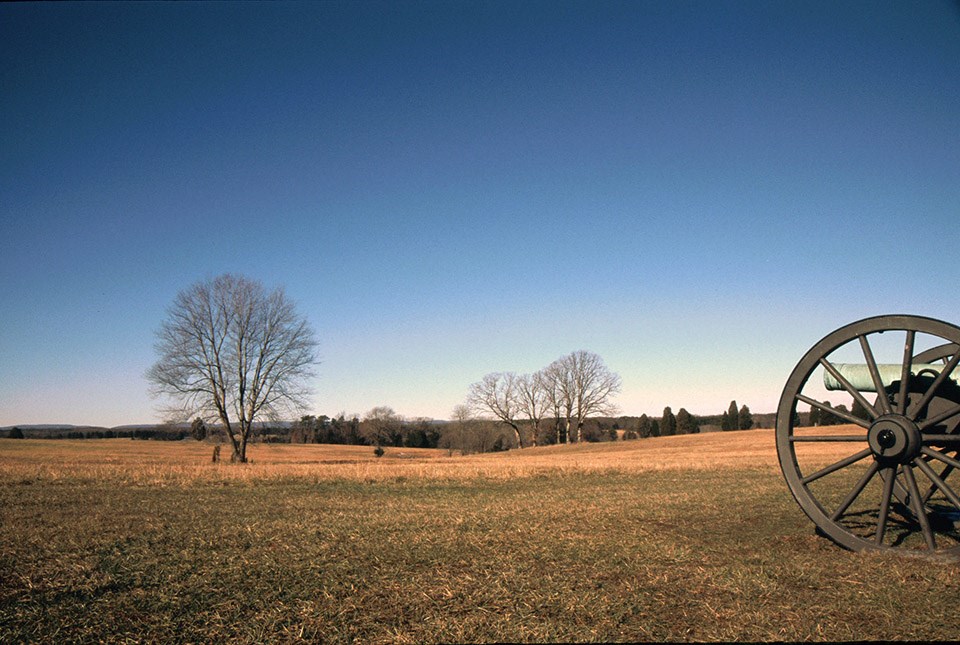Last updated: December 27, 2017
Article
Civil War Battlefields: A Haven for Grassland Birds
By Conor Higgins, NCRN I&M Bird Monitoring Crew Leader and University of Delaware Graduate Student

NPS/Sasha Robinson
Battlefield Birds
In a forest, you may hear or see many different species of birds—but probably not a grasshopper sparrow. These cautious birds, named for one of their favorite foods and the bug-like way they sing, prefer open grasslands. That’s why you’re more likely to see them at one of the Washington, DC-area Civil War battlefield parks— Manassas, Monocacy, or Antietam. In these parks, warm-season (native) grasslands, shrublands, and even cow pastures serve as much needed habitat for grassland-reliant species like grasshopper sparrow.Starting in 2014, to learn more about birds that rely on park grasslands and look at the effects different management actions may be having on them, the National Capital Region Inventory & Monitoring Network (NCRN I&M) began monitoring the grassland birds at Manassas National Battlefield Park. In 2015 monitoring expanded to include Antietam National Battlefield and Monocacy National Battlefield.
A crew of four trained technicians surveyed a total of 206 grassland plots and found a full complement of grassland reliant birds in all 3 parks. Many species showed up in grasslands that we don’t encounter during forest surveys, including Grasshopper Sparrow, Field Sparrow, Vesper Sparrow, Blue Grosbeak, Eastern Meadowlark, Yellow-breasted Chat, and American Kestrel.
Management by Mowing
Grassland habitat is in decline in the eastern United States due to natural succession to forest, fire suppression, and reduction in open agricultural fields. So grassland birds must contend with habitat loss, as well as land management practices that can limit their populations. To prevent saplings and shrubs from establishing into a grassland and reverting it back to forest, grassland habitat requires a regular disturbance regime. Historically, this disturbance was primarily fire, but now most managers maintain grasslands through mowing. At Antietam, Manassas, and Monocacy, mowing is mainly done to maintain a Civil War era landscape, with clear views and sightlines so visitors can easily imagine troop movements on the rolling hills. Unfortunately, mowing can occur in the middle of summer, before the breeding season for many birds has ended. In Manassas in mid-July 2015, it was not uncommon to see meadowlarks looking out of place on a newly mowed field. Mowing during the breeding season can destroy nests, cause direct mortality of fledglings, and possibly affect the foraging resources and behavior of many grassland species (see endnote).Agricultural Land
In addition to the managed grasslands, the National Capital Region (NCR) battlefield parks have large areas of agricultural fields in corn and soybeans, as well as livestock pasture. These agricultural habitats host a different suite of grassland birds than do the warm season grasslands. Surprisingly, agriculture supported the highest numbers of Horned Larks and Vesper Sparrows.Birds and Battlefields - A Symbiosis

NPS/Tom Paradis
Learn more about bird monitoring across NCR.
This article originally appeared in the Winter 2015 issue of the NCRN Natural Resource Quarterly. Issues are available at: https://www.nps.gov/im/ncrn/quick-reads.htm.
End note
Peterjohn (2006) suggests that mowing be delayed until at least after July 15 to allow most birds to successfully rear broods, and that waiting until August 15 would be sufficient for virtually all birds to rear young. He also discusses how mowing mostly controls woody vegetation and can change the structure of the grassland (more or less leaf litter depending on removal or not) compared to fire management which brings the area to early successional grass species.Peterjohn, B. 2006. Conceptual Ecological Model for Management of Breeding Grassland Birds in the Mid-Atlantic Region. NPS/NER/NRR—2006/005. https://irma.nps.gov/App/Reference/Profile/633381
